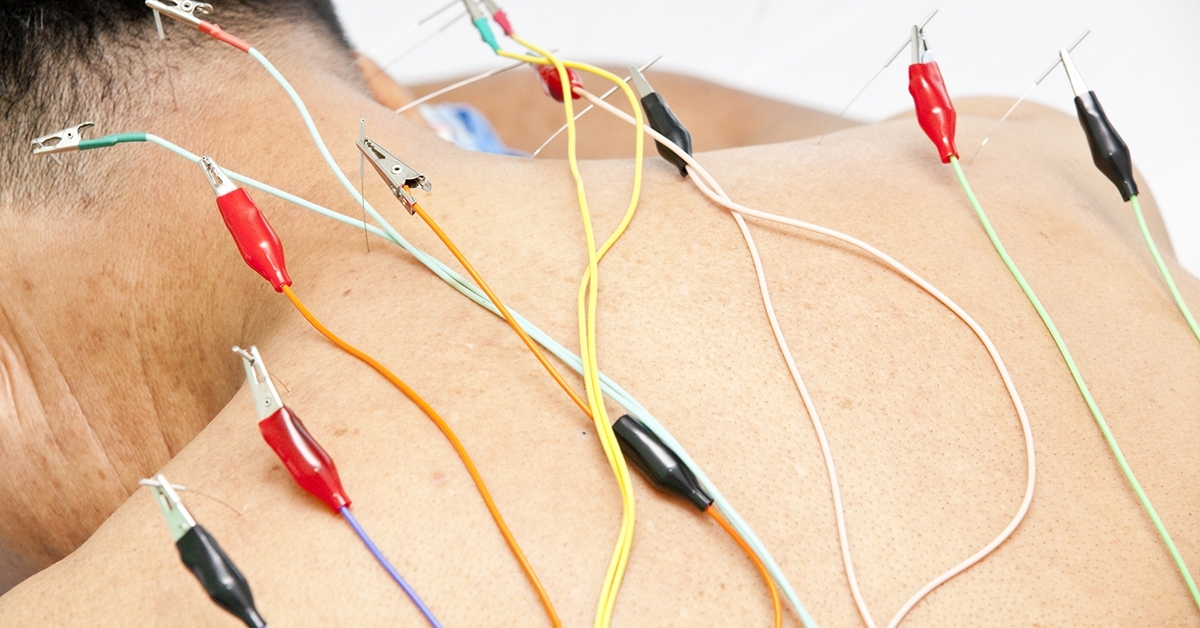Ancient East Asian treatments for all kinds of conditions have made their way into Europe and the Americas as complementary practices. One of the first to do so was acupuncture. It made a big splash in the early ‘70s as a result of President Nixon’s opening to China, and it remains popular.
These days acupuncture is finding new uses in the area of brain health… and it’s doing so in interesting ways.
Read on to discover how this ancient technique is getting a modern makeover, and what this means for memory and cognition.
Acupuncture is a system of treatment in which the practitioner inserts extremely thin, sterile needles into the skin of the patient at certain points on the body called “acupoints” (short for “acupuncture points”) or just “points.”
The belief or theory is that blocked qi (pronounced “chi,” meaning fundamental life energy) in the body is the cause of many health conditions. By stimulating these points, the blocked energy is released and can begin to flow freely again, relieving the symptoms.
It might sound like a hoax to Western minds that are accustomed to pills and surgery as standard medical treatments, but acupuncture has been used in Traditional Chinese Medicine for more than 3,000 years to relieve all kinds of afflictions, including musculoskeletal pain, nausea, infertility, anxiety and insomnia. It’s been shown to positively impact the endocrine, immune, nervous, cardiovascular and digestive systems.1
Now, research is showing that traditional and modern interpretations of this ancient treatment can have a positive effect on the causes and symptoms of Alzheimer’s disease and dementia.
Traditional Acupuncture Can Reduce the Levels of Beta-Amyloid Plaque
An animal study published in 2013 in the journal International Review of Neurobiology found that acupuncture in Alzheimer’s improved synaptic plasticity and enhanced neurotransmitter activity as well as the production of peptides that support neuron growth and survival.
Acupoint stimulation also reduced oxidative damage and the level of beta-amyloid plaques in the hippocampus and other areas of the brain.
These changes were directly associated with increased activity in the temporal and prefrontal lobes, which are related to improved cognition and memory function.2
There’s more. A study of traditional acupuncture, published in 2014 in PLOS One, enlisted 28 human Alzheimer’s patients. The researchers used functional magnetic resonance imaging (fMRI) to determine if stimulating the Tai chong and He gu acupoints (located on the foot and hand, respectively) for three minutes would have any effect on the hippocampus.
The researchers recorded resting activity before acupuncture treatment and after. fMRI showed increased connectivity in most of the hippocampus-related regions compared to the resting state.
The researchers concluded that stimulation at these two particular acupoints can enhance hippocampal connectivity in patients with Alzheimer’s disease.3
A couple of comments seem in order here. First of all, in acupuncture it’s common to treat an organ by applying needles to points on the body that are remote from the organ. The reason is that acupuncture is based on “meridians” – lines of energy or force, if you will – that run all over the body. Thus each of us has a kidney meridian that extends from one end of the body to the other. Likewise for the liver, brain and other organs.
Electroacupuncture and Vascular Dementia
Electroacupuncture (EA) is basically the same as traditional acupuncture, with the addition of a small electric current transmitted through the needles for an increased ability to break up the blocked energy.
Vascular dementia is the second most common type of dementia after Alzheimer’s disease. It’s caused by neurons that decay due to reduced blood flow to the brain, usually caused by damaged blood vessels (after a stroke, for example).
Symptoms of vascular dementia include cognitive difficulties in functions such as planning, problem-solving, following a series of steps (as in cooking from a recipe), and forgetfulness. Behavior issues such as mood swings, apathy, depression and anxiety are also common.
In a study published in the Journal of Integrative Neuroscience, researchers tested the use of EA on the Baihui acupoint, located at the crown of the head midway between the tops of the ears. The tests were conducted on animals with vascular dementia.
They found that animals treated with EA showed reduced “behavior deficits” and increased “long-term potentiation” (strengthening of the synapses).4
Another study showed that mice treated with electroacupuncture showed improved spatial learning and memory as well as a higher uptake rate of glucose in the hippocampus than did mice in the control group. Glucose is the main source of energy for the brain.5
Musical Electroacupuncture Takes Treatment One Step Further
Traditional acupuncture is promising as a way to reduce beta-amyloid plaques associated with Alzheimer’s disease. Electroacupuncture is possibly even more effective than that.
And to top it off, musical electroacupuncture (MEA) shows even better results.
Its advocates call MEA the next generation of electroacupuncture. The electric current that passes through the needles is modulated by the sound of classical music being played for the patient.
A 2016 study published in the journal Neural Plasticity compared the efficacy of EA to that of MEA in mice with Alzheimer’s disease.
The researchers found that – as in the study mentioned previously — EA improved spatial learning, memory and glucose metabolism in the brain. They also noted reduced beta-amyloid plaques in the frontal lobes, compared to the control group.
But they found that the group receiving MEA treatment showed improved results greater than the EA group.6
This is perhaps not all that surprising, considering music therapy is very helpful in overcoming brain damage (see Vol. 3 Issue #355)
If you’ve thought acupuncture was a waste of time, I urge you to reconsider. Studies show that it does improve the body and the brain and that it can be a viable option for improving the symptoms of vascular dementia and Alzheimer’s disease.
I’ve done acupuncture for years – the traditional kind, not electro-acupunture, much less musical electroacupuncture. I do it for my overall wellbeing. I don’t view it as a miracle cure for any particular disease, although some people DO experience “miracle cures” thanks to acupuncture.
There’s no need to be scared of the needles. They’re extremely thin, nothing like the huge hypodermic needles used to take blood or inject vaccines and medicines. The pain is trivial to nonexistent. I always feel better after a treatment.
- How acupuncture can relieve pain and improve sleep, digestion and emotional well-being.
- Effect and mechanism of acupuncture on Alzheimer’s disease.
- Acupuncture modulates resting state hippocampal functional connectivity in Alzheimer disease.
- Electroacupuncture at Baihui acupoint (GV20) reverses behavior deficit and long-term potentiation through n-Methyl-D-Aspartate and transient receptor potential vanilloid subtype 1 receptors in middle cerebral artery occlusion rats.
- Electroacupuncture treatment improves learning-memory ability and brain glucose metabolism in a mouse model of Alzheimer’s disease: Using Morris water maze and Micro-PET.
- Musical electroacupuncture may be a better choice than electroacupuncture in a mouse model of Alzheimer’s disease.







